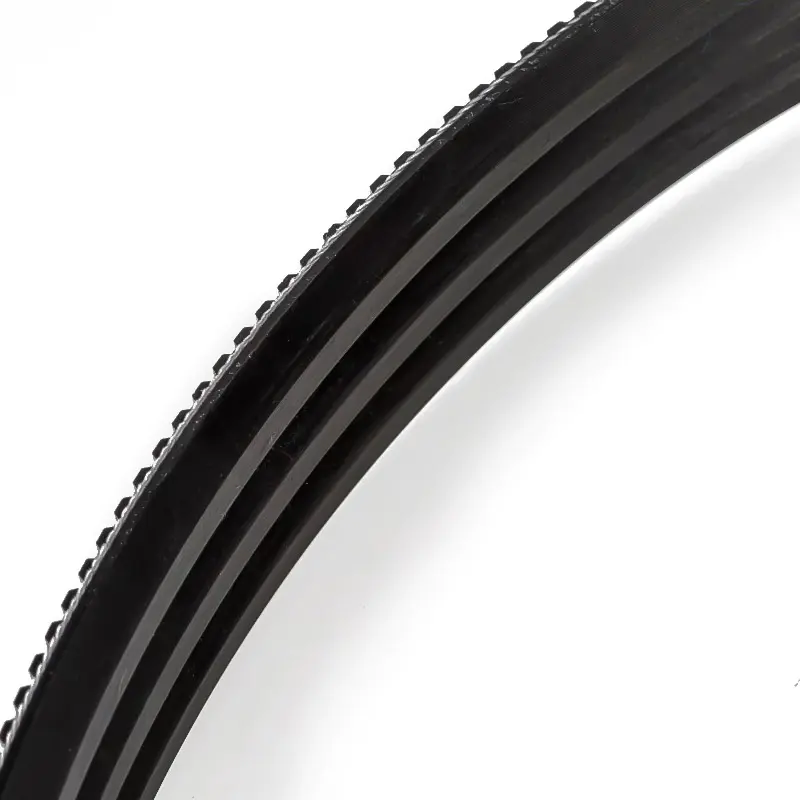Summary:Belt tension is crucial for the proper functioning and longevity of power transmission belts. Proper tension ensures that the belt engages with the pulleys effectively, preventing issues such as slipping, excessive wear, and reduced power transmissio......
Belt tension is crucial for the proper functioning and longevity of power transmission belts. Proper tension ensures that the belt engages with the pulleys effectively, preventing issues such as slipping, excessive wear, and reduced power transmission efficiency. Here's why belt tension is important and how to tension a power transmission belt properly:
Importance of Belt Tension:
1.Preventing Slipping: Adequate tension ensures that the belt grips the pulleys tightly, preventing slipping. Slipping can lead to loss of power transmission efficiency and increased wear on both the belt and pulleys.
2.Optimizing Power Transmission: Proper tension helps in maximizing power transmission efficiency by ensuring that the belt effectively transfers power from the driver (e.g., motor) to the driven component.
3.Extending Belt Life: Over-tensioning or under-tensioning can lead to premature wear and failure of the belt. Correct tension helps to extend the operational life of the power transmission belt.
4.Reducing Heat Generation: Incorrect tension can result in excessive heat generation due to friction, potentially leading to thermal degradation of the belt material. Proper tension minimizes heat-related issues.
5.Maintaining Belt Tracking: Adequate tension helps in maintaining proper belt tracking, ensuring that the belt stays centered on the pulleys and reducing the risk of misalignment-related problems.
How to Tension a Power Transmission Belt Properly:
1.Use a Tensioning Device: Employing precision instruments, such as tension gauges or tensioning tools, is imperative for achieving accurate and consistent belt tension. These devices help measure tension levels objectively, reducing the margin of error associated with manual estimation.
2.Consider Initial and Running Tension: Recognize the distinction between initial tension applied during installation and running tension during normal operation. Professionals should be aware that tension levels may change as the belt settles into its operational state, and adjustments may be necessary to maintain optimal running tension.
3.Account for Temperature Changes: Professionals must factor in temperature variations, as they can influence the material properties of the belt. Temperature changes affect the tension, and adjustments may be required to accommodate thermal expansion or contraction, ensuring that the belt operates within the recommended tension range.
4.Maintain Belt Alignment: Ensuring proper pulley alignment is crucial for consistent belt tension. Misaligned pulleys can lead to uneven tension distribution, causing premature wear and potential belt misalignment. Professionals should employ laser alignment tools or precision measurement methods to guarantee accurate pulley alignment.
5.Follow a Gradual Tensioning Process: Professionals should adopt a methodical approach to tensioning, applying force gradually and evenly across the belt. Rapid or uneven tensioning can result in belt damage, misalignment, or even overtensioning, which may lead to increased wear on bearings and other components.
6.Check Belt Alignment: Regularly inspect and adjust pulley alignment to prevent issues related to misalignment. Misaligned pulleys not only affect tension but can also cause the belt to wander off-center, leading to increased friction, wear, and potential damage to the belt edges.
7.Verify Tension Regularly: Ongoing verification of belt tension is critical for maintaining peak performance. Periodic checks, especially after installation or significant operational changes, help identify any deviations from the optimal tension levels. Professionals should schedule regular maintenance intervals for systematic tension verification.
Wide angle V Belt
